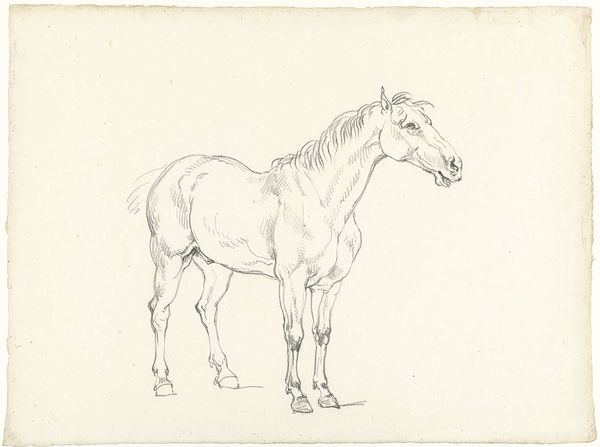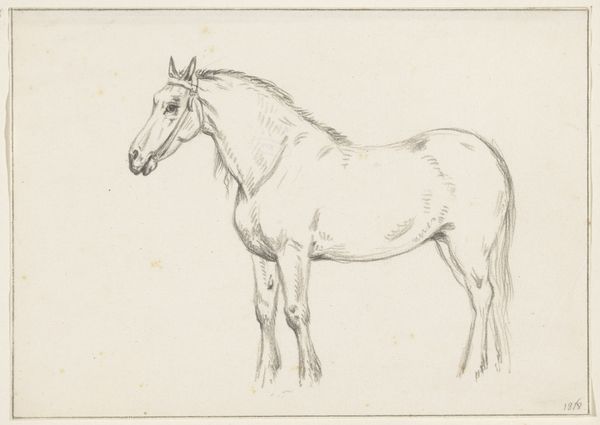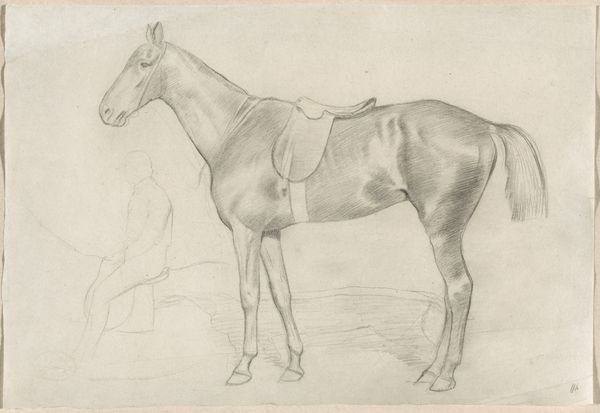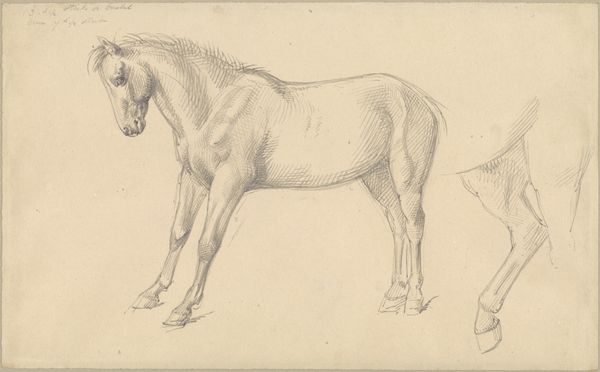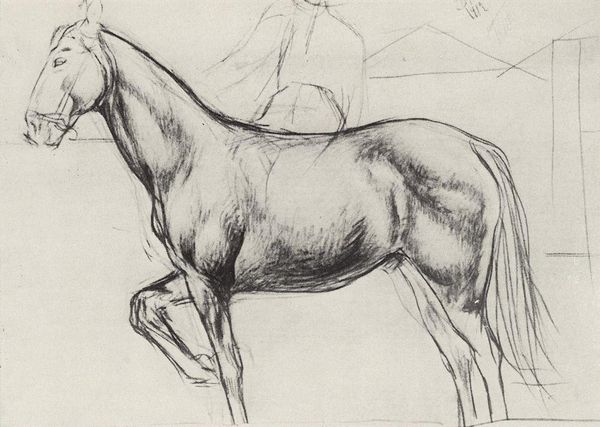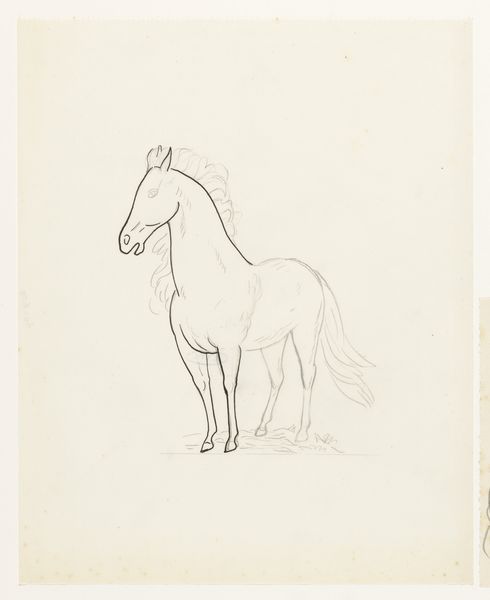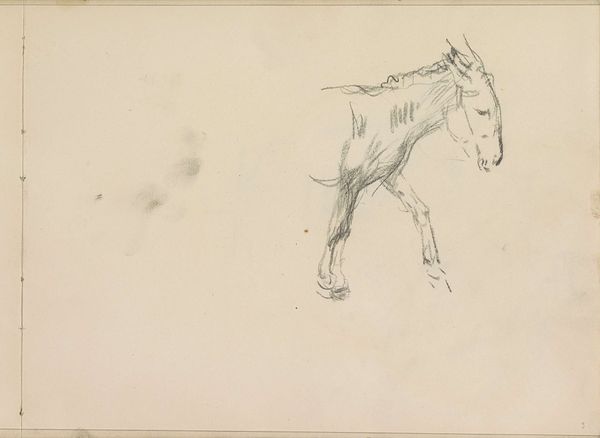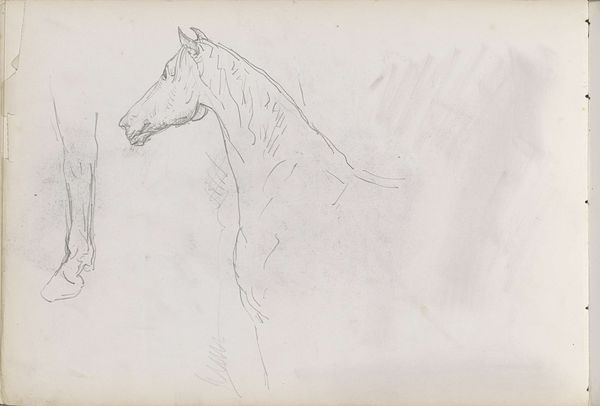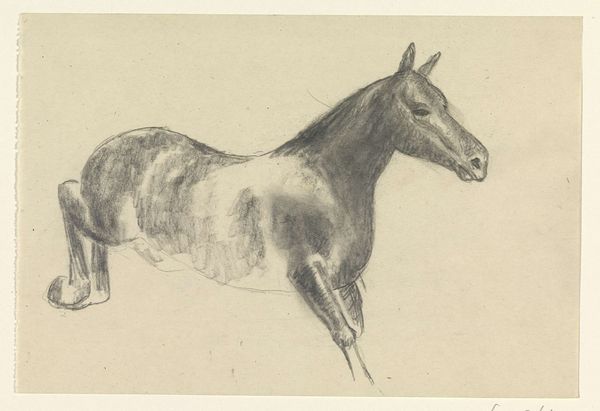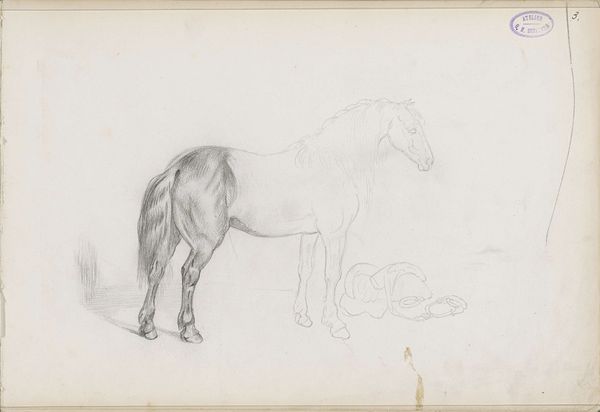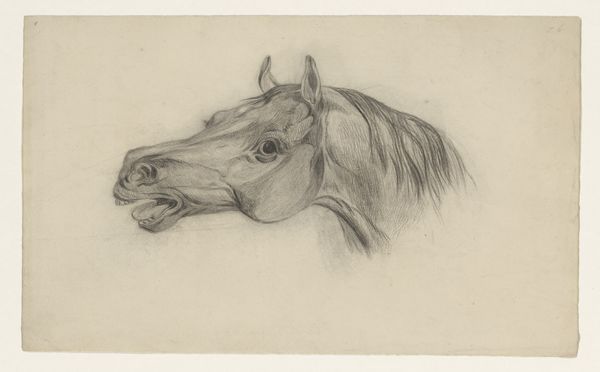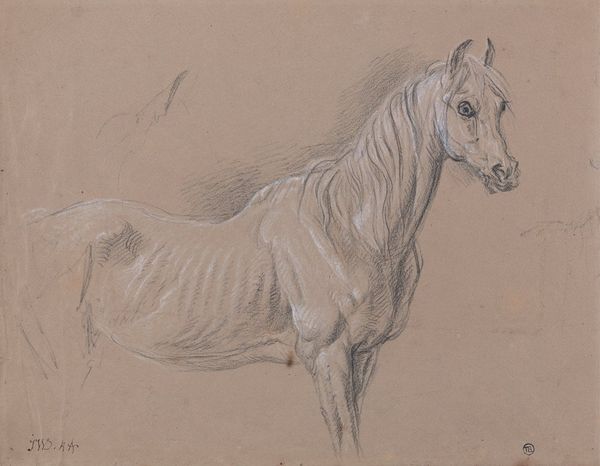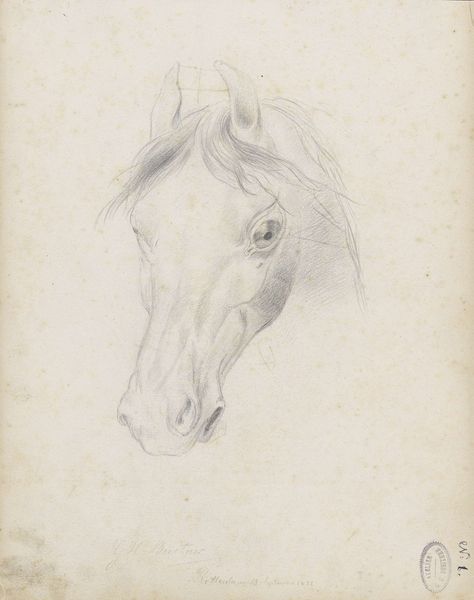
drawing, pencil, graphite
#
portrait
#
drawing
#
amateur sketch
#
light pencil work
#
dutch-golden-age
#
pencil sketch
#
incomplete sketchy
#
landscape
#
personal sketchbook
#
idea generation sketch
#
ink drawing experimentation
#
pencil
#
horse
#
graphite
#
sketchbook drawing
#
academic-art
#
sketchbook art
#
realism
#
initial sketch
Copyright: Rijks Museum: Open Domain
Editor: This is "Staand paard," or "Standing Horse," by George Hendrik Breitner, made in 1873. It’s a pencil drawing, and I find the sketchiness kind of charming, almost like a glimpse into the artist’s process. What strikes you about this piece? Curator: Breitner’s horse offers a fascinating entry point into understanding 19th-century artistic practices and the role of the animal within the visual culture of the time. How does this preparatory sketch differ from finished academic works portraying horses of this period? Editor: Well, it's much less formal, almost like a quick study rather than a polished portrait meant for public display. It’s not idealized like some equestrian paintings of the time. Curator: Precisely. That informality speaks volumes about shifting artistic priorities. Academic art often served specific ideological purposes, reinforcing societal hierarchies, and celebrating power. How might a seemingly simple sketch like this challenge those established norms? Editor: Maybe by focusing on the everyday, on the observation itself, rather than trying to convey some grand narrative? It’s less about the horse as a symbol and more about capturing its form. Curator: Exactly! Breitner was part of a generation increasingly interested in Realism, in portraying life as it was experienced. But think about this, how was the representation of animals linked to ideas of labor, class, and even military power during the 19th century? This sketch offers a nuanced perspective. Editor: So, it’s not *just* a sketch of a horse; it’s a reflection of a changing society and a different way of looking at the world? Curator: Precisely! Breitner encourages viewers to contemplate the subject of labor representation, rather than focusing on romanticized battle scenes or aristocratic hunts. What a fantastic example of an artist re-evaluating artistic conventions. Editor: That really changes how I see it! It’s more than just a practice drawing; it's a subtle statement about artistic and social values. Curator: Indeed, examining sketches like this allows us to delve into the artist’s methodology while unveiling broader historical and cultural undercurrents of the 19th century.
Comments
No comments
Be the first to comment and join the conversation on the ultimate creative platform.

